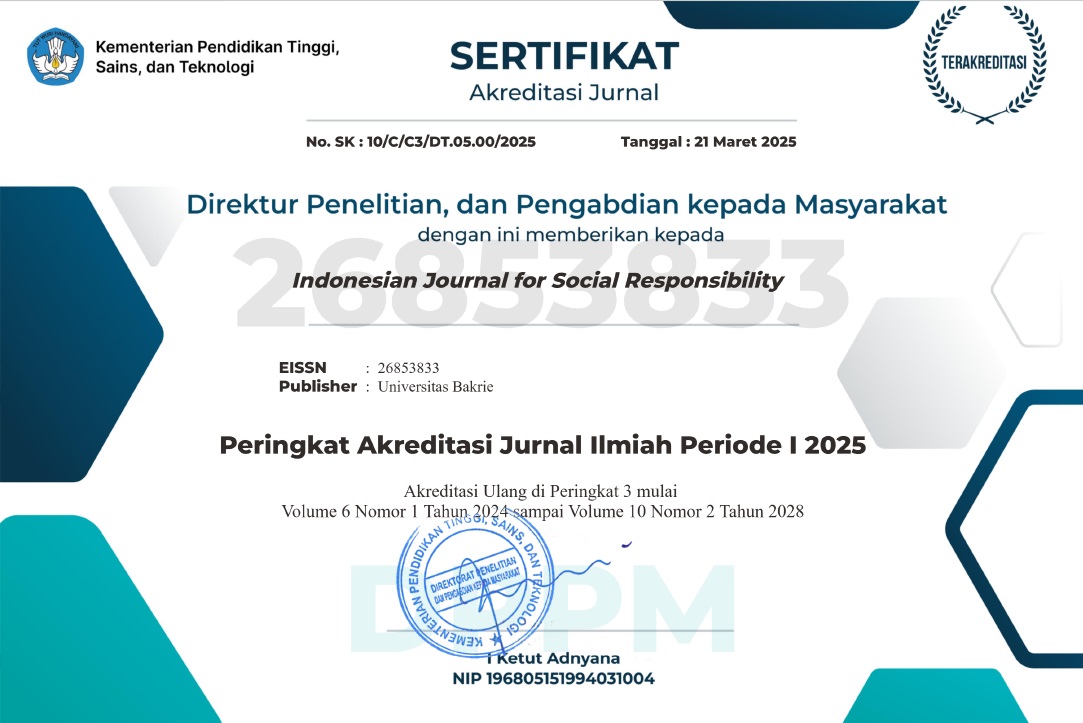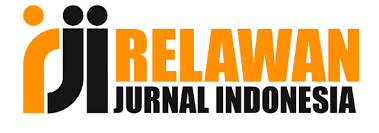Literasi Edukasi Mengenai Bahaya Cyberbullying Terhadap Konsep Diri Siswa di SMA Al-Ma’aruf Cibubur
DOI:
https://doi.org/10.36782/ijsr.v6i02.313Keywords:
Coping Strategies, Cyberbullying, Self-Concept, Social MediaAbstract
Current technological advancements have facilitated various aspects of life for those who utilize them. However, the use of technology, particularly in communication and various other sectors, often lacks corresponding responsibility for its impacts. One significant negative impact is the rise in cyberbullying cases, which not only causes distress but also affects the process of an individual's self-concept formation. In fact, victims of cyberbullying require considerable time to recover from its psychological effects. Considering this phenomenon, our Community Service Program (PkM) will focus on providing explanations about media literacy, specifically the dangers of cyberbullying and its effect on individual self-concept formation. The goal of this initiative is to offer guidance and education on responsible social media usage to 11th and 12th-grade students at Al’Ma’ruf High School in Cibubur, East Jakarta. Responsibility here means that every user should be aware that messages conveyed, both verbally and non-verbally, carry meanings and impacts. These messages can influence the cognitive, affective, and conative aspects of the individuals receiving them. Furthermore, to ensure the effectiveness of this activity, psychological support and effective coping strategies are essential. This support is necessary to help mitigate negative impacts and foster the recovery of a positive self-concept by implementing the Do's and Don’ts provided by facilitators, who can also serve as agents of change among their peers.
Downloads
References
Adityawarman, K. & Rositawati, S. (2018, Agustus). Pengaruh Sel-Fulfilling Prophecy terhadap Self-Efficacy Murid Level 1 di Tempat Les X di Bandung. Prosiding Psikologi, 4(2), 481-490.
Baran, S. J. & Davis, D. K. (2010). Mass Communication Theory: Foundations, Ferment and Future. Wadsworth and Cengage Learning.
Elia. S. (2017, Oktober 4). 41 Persen Remaja Indonesia Pernah Alami Cyberbullying. Kumparan Style. Diakses dari https://kumparan.com/kumparanstyle/41-persen-remaja-indonesia-pernah-alami-cyberbullying
Hartono, A. M., Febriananda, M. S., & Achmada, V. (2022). Tiktok Sebagai PlatformVenting Mendorong Cyberbullying Gen-Z. Prosiding Seminar Nasional Ilmu Ilmu Sosial (SNIIS), 1, 13-22.
Indrayani, S. A. & Johansari, C. A. (2019). Cyberbullying Use on Teenage Artists and Its Implications. Litera, 18(2), 275–296.
Jenkins, H, Ford, S., & Green, J. (2006). Spreadable Media: Creating Value and Meaning in a Networked Culture. New York University Press.
Kementerian Komunikasi dan Informatika Republik Indonesia. (2021, Mei 21). Literasi Digital Bergulir ke Seluruh Negeri. Kementerian Komunikasi dan Informatika Republik Indonesia. Diakses dari https://m.kominfo.go.id/content/detail/34624/literasi-digital-bergulir-ke-seluruh-negeri/0/artikel
Kurniawan, T. (2013, Agustus 6). Di-Bully Akun Anonim, Gadis 14 Tahun Gantung Diri. Beritasatu.com. Diakses dari https://www.beritasatu.com/news/130339/dibully-akun-anonim-gadis-14-tahun-gantung-diri
Larasati, W. P. (2012). Meningkatkan Self-Esteem Melalui Metode Self-Instruction (Tesis, Universitas Indonesia). Universitas Indonesia Library. Diakses dari https://lib.ui.ac.id/detail?id=20314601
Maya, N. (2015). Fenomena Cyberbullying di Kalangan Pelajar. JISIP: Jurnal Ilmu Sosial Dan Ilmu Politik, 4(3), 443-450.
Mruk, C. J. (2006). Self-Esteem Research, Theory, and Practice: Toward a Positive Psychology of Self-Esteem (3rd Edition). Springer Publishing Company.
Nissa, R. N. F. & Hatta, I. (2022). Hubungan Self-Esteem dengan Perilaku Cyberbullying pada Remaja Pengguna Media Sosial Twitter. Bandung Conference Series: Psychology Science, 2(1), 167-173.
Pratama, K. R. & Nistanto, R. K. (2021, Maret 29). Instagram, Media Sosial Pemicu “Cyberbullying” Tertinggi. Kompas.com. Diakses dari https://tekno.kompas.com/read/2021/03/29/07164137/instagram-media-sosial-pemicu-cyberbullying-tertinggi
Rahayu, F. S. (2012). Cyberbullying Sebagai Dampak Negatif Pengguna Teknologi Informasi. Journal of Information Systems, 8(1), 22-31.
Rahayu, F. S., Widjajani, S., & Romas, M. Z. (2013). Iptek bagi Masyarakat Siswa dalam Menyikapi Fenomena Cyberbullying di Kalangan Remaja. Jurnal Abdimas, 17(2), 89-96.
Rakhmat, J. (2019). Psikologi Komunikasi. Bandung: PT. Remaja Rosdakarya.
Ramdhani, N. (2016). Emosi Moral dan Empati pada Pelaku Perundungan-siber. Jurnal Psikologi, 43(1), 66-80.
Rini, C. L. (2014, Oktober 23). Indonesia Masuk Kategori Darurat “Bullying” di Sekolah. Republika. Diakses dari https://news.republika.co.id/berita/ndvn63/indonesia-masuk-kategori-darurat-bullying-di-sekolah
Sekarayu, S. Y. & Santoso, M. B. (2022). Remaja Sebagai Pelaku Cyberbullying dalam Media Sosial. Jurnal Penelitian dan Pengabdian Kepada Masyarakat (JPPM), 3(1), 1-10.















